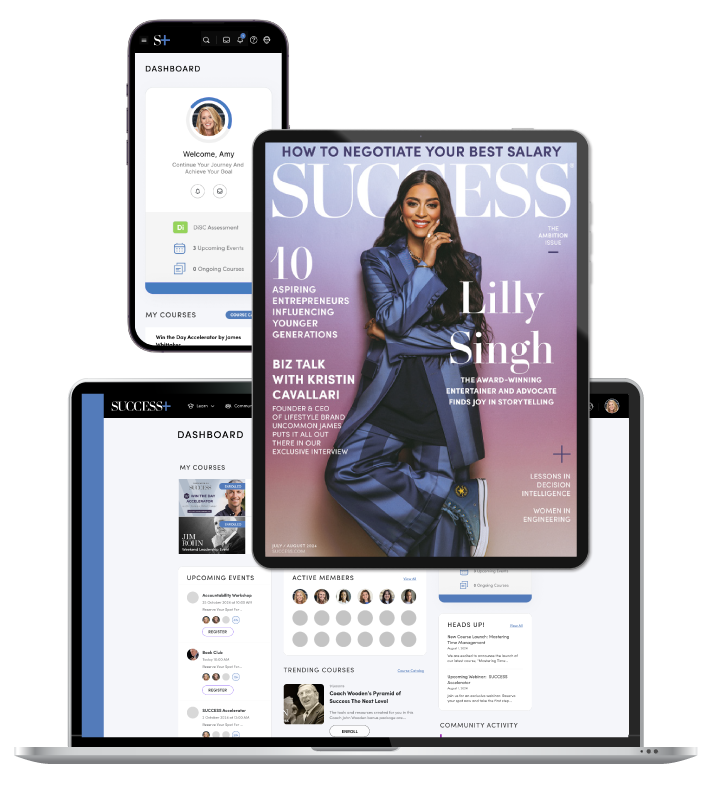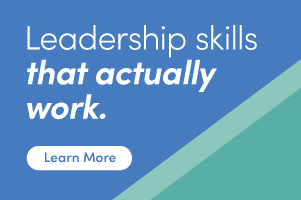
views
Quick Links
SECTIONS
- Business
- Entertainment
- Future of Work
- Health & Wellness
- Lifestyle
- Money
- Personal Development
- Professional Development
- Relationships
- SUCCESS Bestsellers
- Business
- Entertainment
- Future of Work
- Health & Wellness
- Lifestyle
- Money
- Personal Development
- Professional Development
- Relationships
- SUCCESS Bestsellers
JOIN US
- SUCCESS+
- SUCCESS Coaching
- Speakers Bureau
- SUCCESS Events
- SUCCESS Space
- Newsletter
- Daily SMS
- Subscribe
- Shop the SUCCESS Store
- SUCCESS+
- SUCCESS Coaching
- Speakers Bureau
- SUCCESS Events
- SUCCESS Space
- Newsletter
- Daily SMS
- Subscribe
- Shop the SUCCESS Store
GET IN TOUCH
CONNECT
Instagram Facebook Tiktok Linkedin Pinterest X-twitterMORE
 Get SUCCESS® Magazine PLUS 80+ Hours of Exclusive Training (& More!) to Multiply Your Earning Potential
SUBSCRIBE TODAY!
Get SUCCESS® Magazine PLUS 80+ Hours of Exclusive Training (& More!) to Multiply Your Earning Potential
SUBSCRIBE TODAY!
Save Up to 20% Before Oct. 2!
BOOKMARK Share TABLE OF CONTENTS
TABLE OF CONTENTS


The last decade has seen a seismic shift in how we work. Artificial intelligence, remote work and digital collaboration tools have redefined the professional landscape, migrating much of our work to being performed online and revolutionizing the way we engage with our careers. Recent scientific developments are now bringing forward a new prospect of growth: the integration of brain monitoring and neurotechnology into the workplace.
The study of neurotechnology has existed for over a century and has become a rapidly growing sector with a promising future ahead, should public interest continue to rise. On July 6, 1924, German psychiatrist Hans Berger made the first recording of spontaneous electrical activity from the human brain, ushering in a field of discovery that continues to this day. The exploration of the brain, coupled with advancements in technology to monitor and enhance mental function, has been a bold and enduring pursuit.
By the 1980s, technological advancements had enabled extensive visualization and tracking of brain activity. In the 1990s, the launch of the functional MRI allowed scientists to observe brain activity in real-time, marking a significant milestone in discovery.

Neuroeconomics emerges as the next big conversation about workplace trends
Three decades later, neuroeconomics emerged as the major topic of discussion—a field focused on how brain monitoring can improve the workplace. It combines two disciplines: neuroscience, which explores brain structure and function, and ergonomics, the study of aligning technology with human capabilities. While still controversial and fraught with challenges, the integration of this technology will undoubtedly transform future workplaces, making them look and feel vastly different.
Workplaces will soon have access to a rapidly growing market of neurotech devices designed to monitor brain activity and employee performance, promising to boost productivity and technological integration to unprecedented levels. According to Harvard Business Review, the global market for neurotechnology is expanding at a compound annual growth rate of 12%, with projections estimating it will reach $21 billion by 2026. These wearable devices measure electrical activity in the brain or at muscle junctions across the body, providing insights into mood, alertness and fatigue. As one of the most invasive technological offerings to date, it raises numerous questions—many of which remain largely unanswered.
Perhaps the most significant concern is the issue of data collection and protection. The human brain is a deeply personal and precious entity—it is the epicenter of our entire worldview. Allowing workplaces access to our internal neurodata may feel like an intrusion for many. Society tends to embrace technology in stages, and certain advancements take time to be fully accepted. While the major backers and leaders behind this technology envision a promising road ahead, employees will not blindly accept its implementations without thought as to what they’re sharing.
How and where brain activity data is collected can affect whether it falls under the scope of existing protections like HIPAA. This means safeguards that ensure the privacy and security of our physical health data, such as preventing unauthorized access or misuse, may not fully apply to our mental and neural information.
Even more concerning are the significant challenges in maintaining equity and fairness. Neurodata is subconsciously generated, leaving individuals with no direct control over the specific information disclosed. This data, if accessible to employers, could potentially be used to discriminate against certain traits flagged by the technology as problematic.
These products and discussions, along with emerging trends in neuromarketing, are beginning to break into the public sphere but remain confined within a tightly controlled market. The stakes are high. If this technology goes mainstream, it could trigger significant challenges, and the clock is ticking for clear rules and oversight.
In April 2024, a study examined policy documents from 30 companies offering neurotechnology devices. 60% of these companies failed to inform consumers about how their neural data is managed or what rights they have over it, even in countries with data protection laws. Advancements in data encryption and user anonymity could be a crucial step toward solving this issue, though even these measures lack proper oversight and advancement.
While the conversations and risks surrounding neurotechnology are understandably unsettling, there lies a potential for real, transformative change and unprecedented protection in the workplace. Brain monitoring could revolutionize industries like health care, air traffic control and more, where fatigue, lapses in concentration and unnoticed mistakes can have dire consequences. Real-time tracking data could ensure employees now have the right to take breaks. With this tech, employees could have the chance to step into a new space of self-discovery, evaluating how stress, focus and emotions influence their work and environment like never before.
From industry giants to HR leaders, everyone will need to carefully consider how neurotech could drive progress. Its implementation comes with a host of protections and oversight considerations—essential to ensuring the technology remains a positive force in the workplace, not something we fear stumbling upon.
Photo by Marko Aliaksandr/Shutterstock

Pablo Urdiales Antelo
Pablo Urdiales Antelo is a news writer with a sharp focus on politics and business. Drawing from his experience in breaking news and pop culture commentary, he offers a comprehensive and international perspective on current affairs, helping audiences decode the complexities of our modern world.
5473 Blair Road, Suite 100
PMB 30053
Dallas, TX 75231
Copyright © 2024 SUCCESS Magazine. All rights reserved.
Save Up to 20% Before Oct. 2!
Copyright © 2024 SUCCESS Magazine. All rights reserved.
Unlock the Latest Knowledge that Can You Help You Achieve More in Life with More Confidence
Print and Digital Options Available
Oops!
You’ve reached your limit of free
articles for this month!
(plus get access to hundreds of resources designed
to help you excel in life and business)
Please enter your username or email address. You will receive an email message to log in.
No, thanks, I’m not interested in personal growth.
Plus, get access to daily inspiration, weekly newsletters and podcasts, and occasional updates from us.
By signing up you are also added to SUCCESS® emails. You can easily unsubscribe at anytime. By clicking above, you agree to our Privacy Policy and Terms of Use.
Please enter your username or email address. You will receive an email message to log in.
Get unlimited access to SUCCESS®
(+ a bunch of extras)! Learn more.
Please enter your username or email address. You will receive an email message to log in.
The exclusive article you’re trying to view is for subscribers only.
(plus get access to hundreds of resources designed
to help you excel in life and business)
Please enter your username or email address. You will receive an email message to log in.
https://www.success.com/brain-monitoring-workplace-trend/
























Comments
0 comment